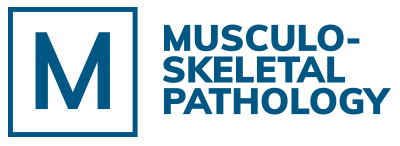05
Study of environmental, iatrogenic, or metabolic factors harmful to the musculoskeletal system.
a. Caffeine, a risk factor for osteoarthritis and the inhibition of longitudinal bone growth.
Rheumatic or musculoskeletal diseases are pathologies that affect the connective tissue. In some of them, such as osteoarthritis, the articular hyaline cartilage is the compromised tissue. The hyaline cartilage, in addition, to localise in the diarthrodial joints, is present in the growth plate where it plays an important role in the longitudinal growth of the bone.
Our group focuses on studying the impact of direct or indirect consumption of caffeine during pregnancy on the articular hyaline and growth plate cartilage.
Data suggest that caffeine negatively affects both cartilages and increases the predisposition to suffer osteoarthritis and inhibits the longitudinal growth of the bone. Therefore, caffeine consumption should be avoided during pregnancy and in patients suffering from rheumatic diseases that involve cartilage tissue such as osteoarthritis.

Figure 1: Comparison between healthy growth cartilage and caffeine treated cartilage.
b. Visfatin is a biomarker and therapeutic target in musculoskeletal pathologies.
The increasing prevalence of musculoskeletal pathologies such as osteoarthritis, osteoporosis, or rheumatoid arthritis, is hindering social well-being. This rising has been related to the increase in metabolic diseases such as obesity, diabetes or dyslipidemia. Among the various factors linked to these pathologies, visfatin (NAMPT) stands out for its importance as an enzyme with pleiotropic activities in multiple tissues including the promotion of inflammatory responses. Therefore, our group studies the use of visfatin as a biomarker and /or therapeutic target to manage the chronic inflammatory component found in major rheumatic diseases.

Figure 1: Osteoarthritis increases visfatin / NAMPT levels, which positively correlate with the development of the pathology, multiple other biomarkers including inflammatory and catabolic factors.
c. Study of the potential adverse effects on the growth plate of neurological diseases drug treatments.
Certain drugs used to manage mental and neurological diseases have frequently been associated with alterations in the metabolism of various organs and tissues. Specifically,it has been observed that some drugs side effects affect the articular hyaline and the growth plate cartilage. In fact, several studies showed significant differences in the height of those young patients receiving treatment with those drugs. Beyond the direct consequences that these drugs may have on the musculoskeletal system tissues, it is utterly important the predisposition that they may produce to suffer other musculoskeletal pathologies.
Currently, the molecular mechanisms associated with these adverse effects remain unknown. Nonetheless, several hypotheses are formulated to explain these effects in situations where intake alterations may play a critical role. However, other hypotheses suggest the interference of those drugs with signaling pathways involved in the anabolism and growth of musculoskeletal system tissues.
Therefore, in this research line, we are determined to assess the effects of these drugs at the cellular and tissue level in order to isolate their local effects among their other indirect effects associated with endocrine alterations. The specific know-how of the molecular events unleashed by those drugs will facilitate the development of therapeutic approaches targeting their side effects.

